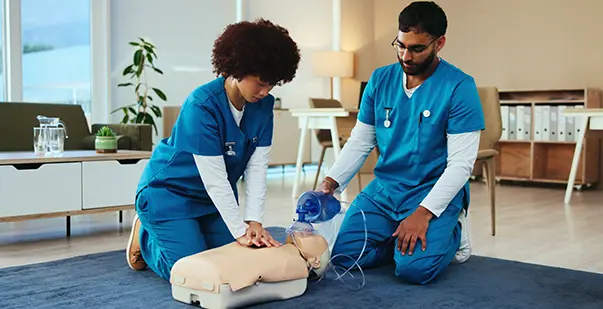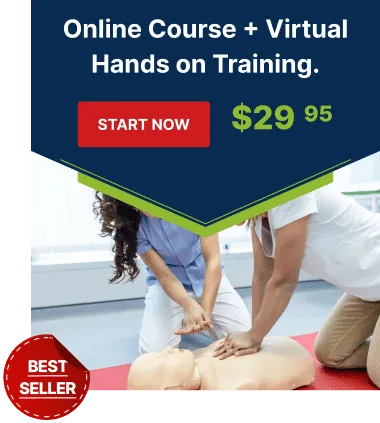Table of Contents:
- Introduction
- Who Is a Cardiac Nurse?
- What Does a Cardiac Care Nurse Do?
- Work Settings for Cardiac Nurses
- Skills and Qualifications
- How to Become a Cardiac Nurse: Step-by-Step Process
- What Is The Cardiac RN Job Description And Salary?
- Become a Cardiac Nurse Today to Save Lives Tomorrow!
Cardiovascular diseases are responsible for nearly 17.9 million deaths every year, according to the World Health Organization. With heart disease rates climbing and hospital admissions on the rise, you might wonder: Who’s on the front lines caring for these patients? That’s where cardiac nurses step in.
A cardiac nurse, also known as a cardiovascular or cardiology nurse, is a registered nurse trained to care for individuals with heart conditions.. If you’re looking for a fast-paced, meaningful healthcare role, cardiac nursing might be the right fit. So, keep reading to get a complete cardiac nurse job description, including what does a cardiac care nurse do, their required skills, and their prospects.
Who Is a Cardiac Nurse?
A cardiac nurse provides care for people who have had strokes, heart attacks, or live with chronic issues like high blood pressure or heart failure. According to the American Heart Association, cardiovascular nursing ranks as the eighth-largest inpatient specialty, with over 110,000 registered nurses (RNs) and advanced practice registered nurses (APRNs) specializing in this field.
For instance, when heart attacks or strokes happen, patients typically arrive at the Emergency Room first and are then taken to a cardiac ICU, where they can be stabilized and kept under close supervision. Cardiology nurses collaborate with cardiologists, respiratory therapists, and other specialists during this critical phase. You’ll often find them in emergency rooms, ICUs, or cardiac rehab units, where they are always ready to step in.
What Does a Cardiac Care Nurse Do?
Cardiac care nurses are trained to support patients through all stages of heart-related illness. They are often the first to notice subtle changes in a patient’s condition that could signal a life-threatening emergency. If you’re wondering what a cardiac care nurse does, their role covers everything from monitoring patients to assisting in life-saving procedures.
Here’s a complete overview of what cardiac nurses do:
-
Patient Assessment and Monitoring
Cardiac nurses regularly assess patients’ heart conditions. They check vital signs, such as blood pressure, oxygen levels, and heart rate, to spot early warning signs. Any sudden changes in condition are reported to a physician immediately for a fast medical response.
-
Administering Medications
Cardiac nurses are responsible for administering medications required to keep the heart healthy. They ensure each medicine is given in the correct dosage and at the appropriate time. The most commonly given medications are beta-blockers (to slow the heart rate), anticoagulants (to prevent blood clots), and diuretics (to eliminate excess fluid from the body). Cardiac nurses also monitor side effects or allergic reactions to ensure safe treatment.
-
Assisting in Procedures
Cardiac nurses also play a major role during heart-related tests and surgeries. They prepare patients by explaining the steps, reviewing their medical history, and ensuring their comfort and well-being. During procedures like Electrocardiograms, stress tests, and angiograms, they assist with monitoring and setup. In surgeries, such as pacemaker insertions or valve repairs, they help maintain sterile conditions, track vital signs like heart rate, blood pressure, oxygen level, and breathing rate, and ensure that equipment is ready. Their support keeps everything running smoothly and safely.
-
Patient Education
Educating patients is a key part of a cardiac nurse’s role. Nurses provide clear explanations of diagnoses, medications, and treatment plans. They also suggest lifestyle changes that can improve heart health. According to the CDC, quitting smoking has several benefits, in particular for cardiovascular diseases:
- 1 to 2 years after quitting: The risk of heart attack drops significantly.
- 3 to 6 years after quitting: The added risk of coronary heart disease is reduced by half.
- 15 years after quitting: The risk of coronary heart disease aligns closely with that of non-smokers.
Cardiac nurses often share this kind of information to motivate patients.
They also help patients make heart-healthy choices, such as eating a healthier diet, staying active, and managing stress.
-
Postoperative Care
Recovery after heart surgery is delicate, and cardiac nurses are there every step of the way. They manage wounds, control pain, and monitor progress closely to detect complications early and help you regain strength safely. What’s more, they help families learn to care for patients at home, reducing the chances of hospital readmission.
-
Catheterization and Defibrillation
Cardiac catheterization is a procedure where doctors use a thin tube to check blood flow in your heart. Cardiac nurses help during this process by watching heart rhythms and keeping patients safe.
In case of any problems during or after the procedure, cardiac nurses are trained to act fast. They help prevent or manage complications like chest pain or changes in heart rate.
Sometimes, patients may face life-threatening heart problems like a sudden stop in the heartbeat. This is called cardiac arrest. In such cases, nurses perform CPR (Cardiopulmonary Resuscitation) to keep blood and oxygen moving.
They also use a machine called a defibrillator to give an electric shock. This helps bring the heartbeat back to normal if it becomes irregular or stops suddenly.
Read More: How Often Should You Have a Stress Test
Where Do Cardiac Nurses Work?
Cardiac nurses care for heart patients in many places. Their duties change based on the setting. From high-pressure hospital units to personalized home care, their roles can vary widely. According to the U.S. Bureau of Labor Statistics, nearly 58% of registered nurses work in general medical and surgical hospitals, while about 19% work in outpatient or ambulatory care services. These different settings allow cardiology nurses to support patients through all stages of cardiovascular care—from diagnosis and treatment to rehabilitation and long-term management.
Below are the most common workplaces for cardiac nurses:
-
Cardiac Care Units (CCUs) in Hospitals
Cardiac nurses in CCUs care for patients with serious heart problems like heart attacks or chest pain. They monitor vital signs, give medicines, and support doctors during emergency heart treatments and procedures.
-
Intensive Care Units (ICUs)
In ICUs, cardiac nurses look after patients in critical condition. These patients may need machines to help their hearts. Nurses act fast in emergencies and provide round-the-clock heart care and monitoring.
-
Outpatient Cardiology Clinics
In outpatient clinics, cardiac nurses help with routine checkups and follow-ups. They track heart issues like high blood pressure or irregular heartbeat and guide patients on managing their heart health at home.
-
Cardiac Rehabilitation Centers
These nurses help patients recover after heart surgery or a heart attack. They assist with safe exercise plans, offer emotional support, and teach lifestyle changes to avoid future heart problems.
-
Home Healthcare Services
Some cardiac nurses visit patients at home, especially those who can’t travel. They check vital signs, give medications, and ensure heart care continues safely in the comfort of the patient’s home.
-
Telehealth and Remote Monitoring Programs
Cardiac nurses also work remotely. They use phone or video calls to check on patients. With remote devices, they can track heart health and offer advice without needing a hospital visit.
Read more: What is the difference between cardiac arrest and a heart attack?
How to Become a Cardiac Nurse: Step-by-Step Process
According to research published in the Methodist DeBakey Cardiovascular Journal, a 6% increase in the nursing workforce is expected over the next decade. But with the rise of heart disease and an aging population, that won’t be enough to cover the growing demand for nurses. So, what does a cardiac care nurse do to stand out? You need the right education, license, and hands-on training. It usually takes about 4 to 6 years to establish a solid career foundation in this specialty. Here’s a step-by-step process:
Step 1: Earn a Nursing Degree (ADN or BSN)
To become a cardiac nurse, the first step is to earn a nursing degree, either an Associate Degree in Nursing (ADN) or a Bachelor of Science in Nursing (BSN). An ADN typically takes about 18 months to 2 years to complete, while a BSN usually takes 4 years. Both paths qualify you to become a registered nurse in cardiology, but a BSN offers more in-depth training and can open up more job opportunities, especially in specialized roles like cardiac care.
Step 2: Pass the NCLEX-RN Exam
Once you’ve completed your nursing degree, the next step is to pass the National Council Licensure Examination for Registered Nurses (NCLEX-RN). It assesses your knowledge of key areas like patient care, safety, infection control, and health promotion. Passing the NCLEX-RN is mandatory in all U.S. states and is the official requirement to get your RN license.
Step 3: Gain Experience in Cardiac Settings
After becoming a registered nurse, it’s important to work in environments where cardiac patients are treated. Gaining 1 to 2 years of experience in areas such as the Intensive Care Unit (ICU), telemetry units, or emergency departments helps you develop critical skills. You’ll learn to respond in high-pressure situations, monitor heart rhythms, and manage complex cardiac cases.
Step 4: Pursue Cardiac Certifications
Once you gain experience, certifications in cardiac nursing help you stand out. They show your advanced knowledge and make you more competitive in the job market. Consider certifications such as the Cardiac Vascular Nursing Certification (CV-BC).
Step 5: Continue Learning and Training
Cardiology is a fast-evolving field. To provide the best care, nurses must commit to lifelong learning. Attend workshops, take advanced courses, and pursue continuing education credits to stay current with new treatments, technologies, and care practices.
What Is The Cardiac RN Job Description And Salary?
According to the Nurse Journal organization, the average annual salary for a cardiovascular nurse in the United States is approximately $88,650. However, actual pay may vary depending on factors such as education level, experience, location, and work environment. Nurses with advanced certifications or those working in specialized cardiac units tend to earn more.
With the number of older people growing and heart issues becoming more prevalent, there is a significant demand for skilled cardiac nurses. So, if you’re a registered nurse looking for a dynamic and meaningful specialty, cardiac nursing is a rewarding opportunity.
Become a Cardiac Nurse Today to Save Lives Tomorrow!
Heart disease continues to be the leading cause of death worldwide, and the need for skilled cardiac nurses has never been more critical. As a cardiac nurse, you are on the front lines, responding to emergencies, monitoring recovery, and helping patients make lasting changes to their lifestyle. It’s a role that blends clinical expertise with compassion and fast decision-making.
If you’re considering this path, start by learning what does a cardiac care nurse do and how they impact patient care. One of the most valuable steps you can take is enrolling in an online ACLS (Advanced Cardiovascular Life Support) course. It equips you with the skills to respond confidently in high-pressure cardiac situations and strengthens your foundation as a heart care specialist.







